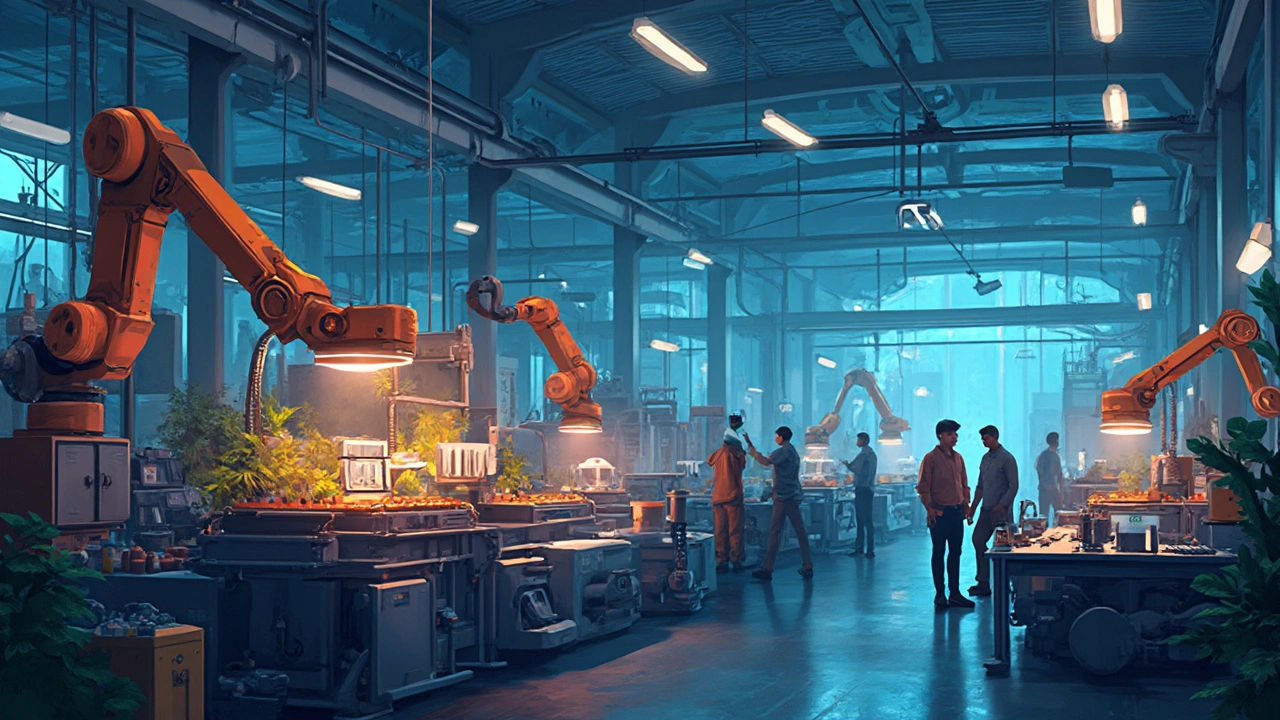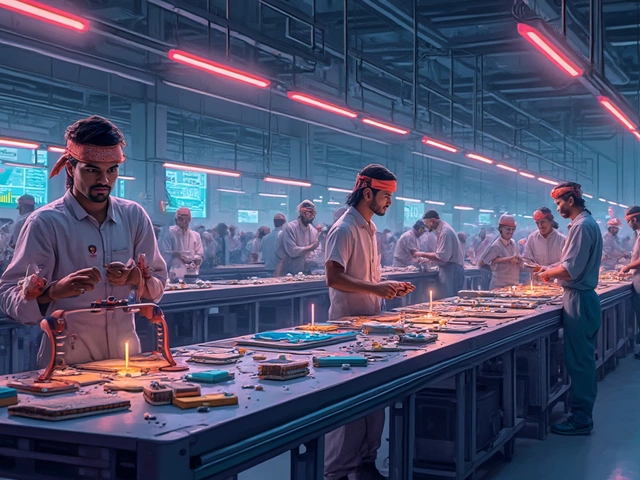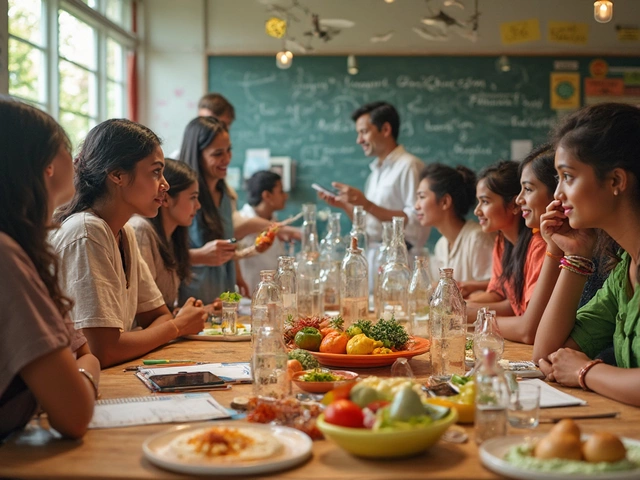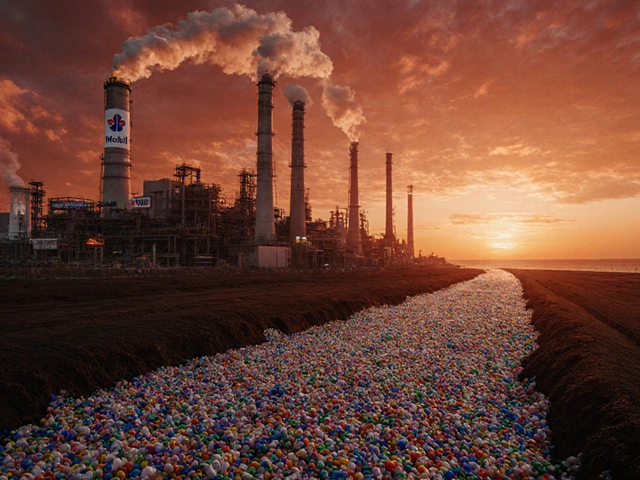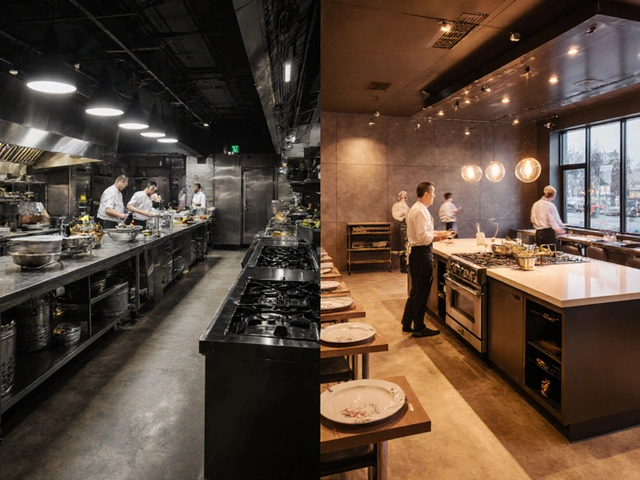Ever wondered how many plastic companies are buzzing around in the US? It's like trying to count stars some nights! The American plastic industry is enormous, featuring a wild variety of businesses. We're not talking just big wigs with their massive factories; it includes tons of smaller, niche companies churning out specialized products. From the packaging that keeps your Amazon orders safe to the parts in your fridges, plastic companies are everywhere.
Here's the kicker, though—these companies don't just churn out plastic for the sake of it. Many are diving deep into sustainable practices and innovative tech because, let's face it, the planet needs all the help it can get. So, while some companies stick to traditional methods, a growing number are pushing boundaries like swapping out old-school materials for biodegradable ones. Ever picked up a product and thought it felt different? That’s innovation at play!
- A Glimpse into the US Plastic Industry
- Counting the Plastic Companies
- Types of Plastic Manufacturing
- Challenges Facing the Industry
- Innovation in Plastic Production
- The Future of Plastics in the US
A Glimpse into the US Plastic Industry
Alright, let’s peel back the curtain on the US plastic industry. It’s not just a bunch of factories pumping out shiny, synthetic stuff. Instead, it's a vibrant ecosystem blending traditional methods with cutting-edge innovations. This world is vast, with over 16,000 companies contributing to everything from wrapping your sandwich to supplying parts for rocket ships.
The plastic scene in America is not just about size. It’s also about variety. These companies cater to different sectors—automotive, healthcare, packaging, and tech, just to name a few. Ever stop to think about all the plastic that's the backbone for gadgets and vehicles? We're talking about a major player in the economy, generating billions of dollars annually.
And it’s not all about production. Many businesses are now keen on keeping the Earth happy, too, by focusing on sustainable and eco-friendly practices. Those biodegradable coffee cup lids or the recycled plastic in your phone case are not just happy accidents. They're part of a calculated push towards reducing environmental impact while still meeting consumer demands.
An increasing number of companies are investing in research to make plastics that last longer, work better, and are kinder to our planet. It’s a shared mission driven by necessity and the changing preferences of people like you and me who now prioritize green over convenience.
In this industry, every plastic piece matters, and so does every effort to make it better, more efficient, and environmentally friendly.
Counting the Plastic Companies
So, how many plastic companies do we have in the good ol' US of A? As of the latest figures, there are about 16,000 companies amplifying plastic production's vibe across the nation. This doesn't just include giants like Dow Chemical or DuPont but also a bustling world of smaller players, each trying to make a plastic mark. It's like a plastic jungle out there!
What's interesting is the variety. These companies are not all cut from the same mold. We've got businesses focusing exclusively on packaging materials—think food packaging and industrial wraps. Then there are those diving into the construction scene, producing stuff like PVC pipes and siding materials. Some are focused on custom solutions for the automotive industry, churning out parts that make your car lighter and faster.
| Type of Plastic Company | Focus Area |
|---|---|
| Packaging | Food wrappers, industrial wraps |
| Construction | PVC pipes, vinyl sidings |
| Automotive | Lightweight car parts |
| Consumer Products | Bottles, everyday items |
| Sustainability-focused | Biodegradable plastics |
Yet, despite this huge number, the industry's facing some big hurdles. The boom in sustainable products is nudging many firms to rethink how they do business. Customers are demanding eco-friendly solutions, and companies are hustling to keep up. Not to be left behind, a bunch of them are investing in research to find materials that can decompose quicker or be recycled more efficiently.
All this means we're seeing a subtle shift in the landscape. Traditional plastic firms may be huge in number, but they’re not resting on their laurels. With regulations tightening and consumers getting savvier, navigating this plastic-packed future is anything but simple!
Types of Plastic Manufacturing
The world of plastic manufacturing in the US is as diverse as it is vast. Each type of manufacturing process has its own specialty, serving different industries and requirements. Let’s check out some of the key methods these US-based plastic companies use to create everything from household items to industrial parts.
Injection Molding is one of the most common and versatile methods. It involves injecting molten plastic into a mold. Once it cools, you get a solid piece that can range from toy parts to automotive components. It's efficient and ideal for mass production, making it a staple in the industry.
Next up, there's Blow Molding. If you've ever held a plastic bottle, blow molding is the magic behind it. The process involves inflating heated plastic into a mold cavity. It's perfect for creating hollow objects and is widely used for bottles, containers, and other similar products.
Then we have Extrusion. Think of spaghetti, but in plastics. This process involves pushing molten plastic through a die to create long shapes like pipes, tubes, and sheets. It's super handy for continuous production forms.
If you need something out of a flat sheet, Thermoforming is the go-to. It involves heating plastic sheets and shaping them over a mold. Used for items like packaging trays and disposable cups, it's ideal for large, thin-walled items.
Last but not least, we’ve got 3D Printing, which is growing fast, thanks to cool tech advancements. This method uses plastic filament to build products layer by layer, offering customization and flexibility. It’s not just a hobbyist’s dream but is revolutionizing prototypes in industries everywhere.
The variety in plastic manufacturing processes helps cater to diverse needs, challenges, and innovations across America’s buzzing manufacturing landscape.
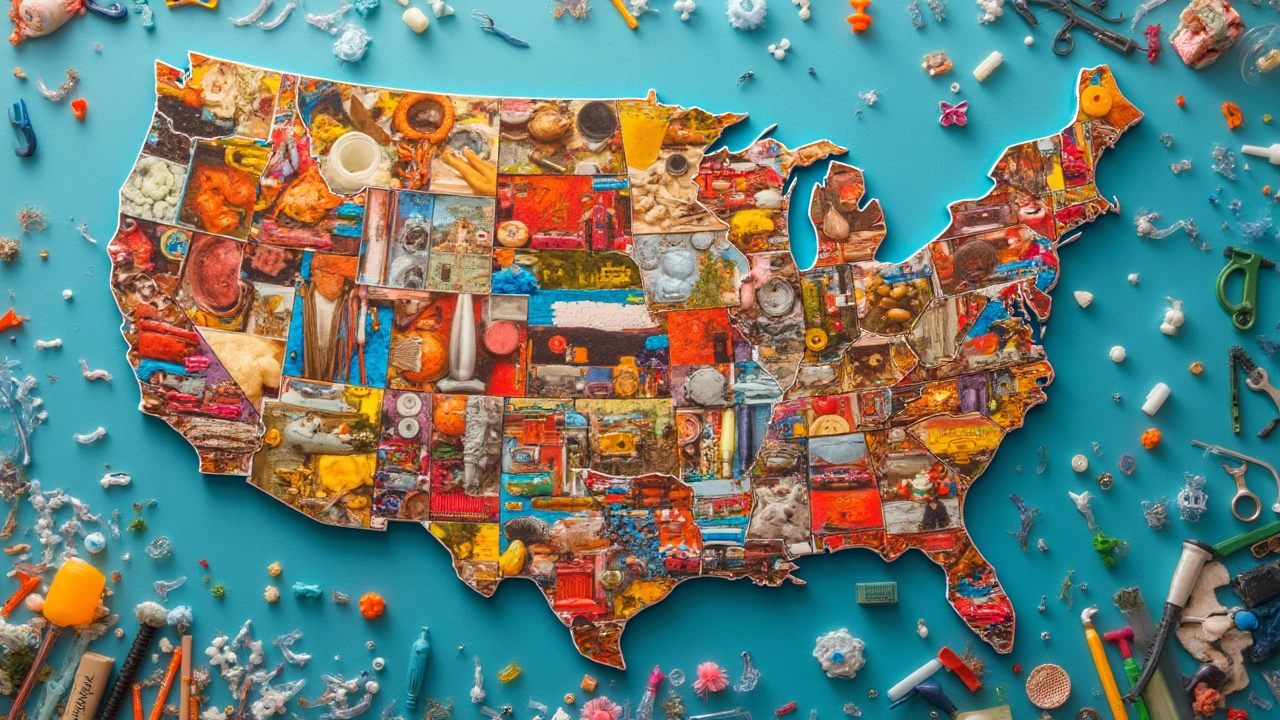
Challenges Facing the Industry
The plastic companies in the US are dealing with big-time issues that aren't going away anytime soon. Environmental concerns are at the top of the list. With climate change and pollution threatening our planet, people are demanding greener solutions, and fast. Companies are under pressure to cut down on waste, find alternatives to traditional plastics, and improve recycling processes. Not an easy task, right?
Then there's the issue of fluctuating raw material costs. The prices of oil and natural gas, which are crucial for plastic production, are all over the place. One day costs are up, next day they're down—keeping up is a real headache for plastic manufacturers.
Government regulations are another tough nut to crack. With the push for sustainability, lawmakers have been tightening the screws with stricter laws about emissions and plastic waste. While these regulations aim to protect the environment, they also mean more red tape and costs for businesses.
- Addressing consumer demands for more eco-friendly products.
- Managing the impact of fluctuating oil and natural gas prices on production costs.
- Adapting to stricter government regulations on emissions and waste management.
Labor shortages are also becoming a hot topic. Finding skilled workers who understand the latest tech in plastic manufacturing isn't as easy as it sounds. Many companies are investing in training programs, trying to bridge the gap between the skills they need and what's available. But this takes time and resources.
To top it off, the competition from overseas is intense. Emerging markets in regions like Asia offer lower production costs, making it hard for US-based manufacturers to keep prices competitive while still maintaining quality.
| Challenge | Impact Level |
|---|---|
| Environmental Concerns | High |
| Fluctuating Raw Material Costs | Medium |
| Government Regulations | High |
| Labor Shortages | Medium |
So, what's the bottom line? It's a wild ride for US plastic manufacturers, trying to juggle all these challenges while staying afloat and competitive.
Innovation in Plastic Production
When you think of innovation, plastics might not be the first thing that pops into your mind. But man, this industry is a hotbed of creativity right now! Companies in the US are hustling to shake things up in the world of plastic production because keeping up with environmental demands is essential. You might have noticed products labeled as biodegradable or even compostable. That's not just marketing fluff—that's real tech doing its magic.
Let's talk about one exciting development: bioplastics. More American companies are investing in these materials, which are often made from renewable sources like corn starch or sugarcane. Imagine using a plastic fork that might just break down in your compost pile! And it’s not just about new materials; existing plastics are getting a makeover too.
Take recycling, for example. The US plastics sector is investing heavily in advanced recycling technologies, like chemical recycling. This process breaks down plastic at a molecular level, turning it back into its raw materials. So, even those tricky-to-recycle plastics can be given a second life. Now that's some next-level thinking.
3D printing is another game-changer. It's allowing companies to use plastics in ways we couldn’t imagine a decade ago. Complex designs and specifications are no longer a hurdle. From medical devices to automotive components, 3D printing is pushing innovation in every corner of the industry.
Here's a little fun fact: According to the Department of Energy, the US bioplastic production capacity is poised to hit around 30% of the global share by the end of this decade. That's a huge slice of the pie, showing just how committed American companies are to leading the charge worldwide.
These innovations aren't just techy updates; they align with a broad movement towards sustainability and efficiency, helping companies not just keep up, but redefine what it means to be a modern leader in the US plastic manufacturing scene. As a consumer, every little shift you notice—whether it’s a package that seems lighter or a container that feels different—is a signal of these innovations in play.
The Future of Plastics in the US
Looking forward, the landscape for plastic companies in the US is kind of a mixed bag—full of challenges but also brimming with opportunities. As of now, the US plastics industry is valued in the hundreds of billions and employs over a million people. The drive towards sustainability is causing a major shift, pushing companies to rethink how they operate. Expect a lot more bio-based and recyclable materials in everything from soda bottles to shopping bags.
So, here's what's changing gears in the future. For starters, new government regulations are meant to reduce plastic waste and promote recycling. These rules are making businesses rethink their production lines and materials. Then, you've got consumer trends. Customers are getting picky, demanding products that don’t just serve their needs but also align with eco-friendly values. It's like a wave, and companies that want to stay afloat need to ride it.
| Year | Estimated Market Value of US Plastics Industry (USD) |
|---|---|
| 2025 | $400 billion |
| 2030 | $450 billion |
Innovation is the name of the game. Many are betting big on technologies like AI for smarter recycling and advanced manufacturing processes that waste less material. Some companies are even exploring the potential of replacing traditional plastics with novel alternatives like algae-based plastics. Sounds a bit sci-fi, but hey, it's happening!
But it's not all smooth sailing—there's a constant battle with the economic side of things. The costs of switching to greener methods can be significant, and not every company has the deep pockets to make it happen overnight. However, the ones that do adapt quickly could see themselves leading the pack in what’s shaping up to be a very different and exciting future for the plastics industry.
